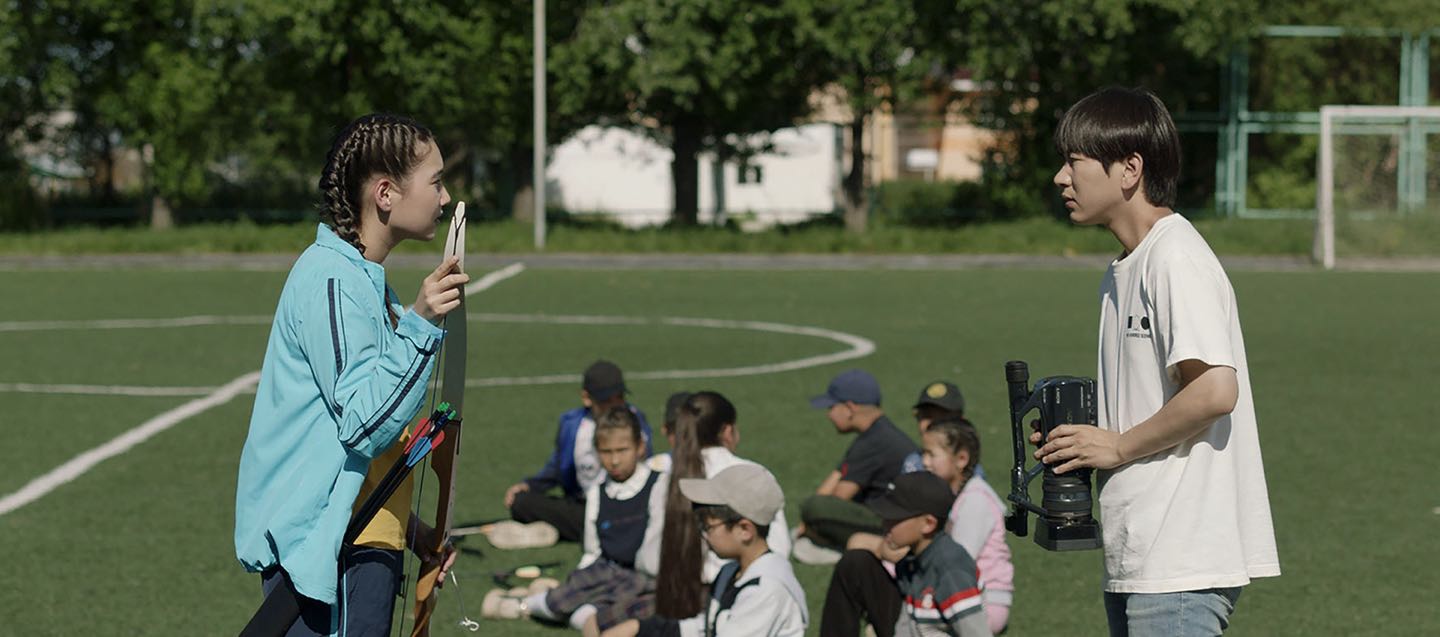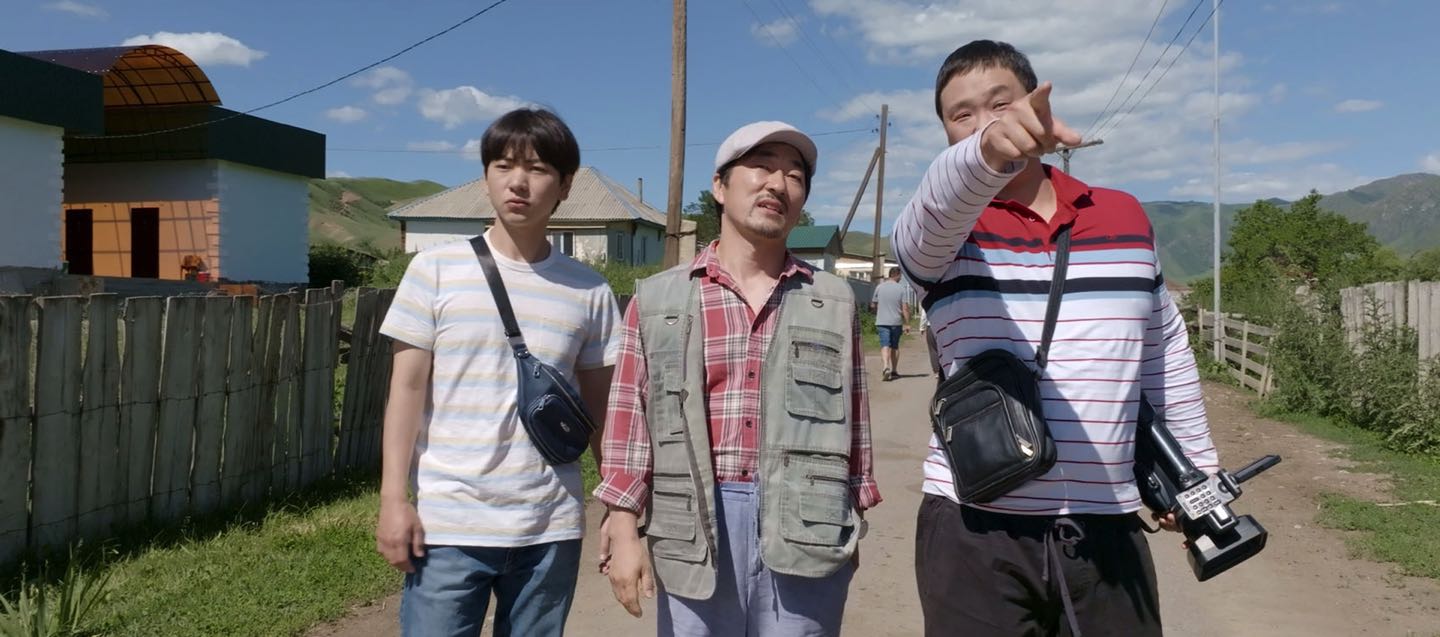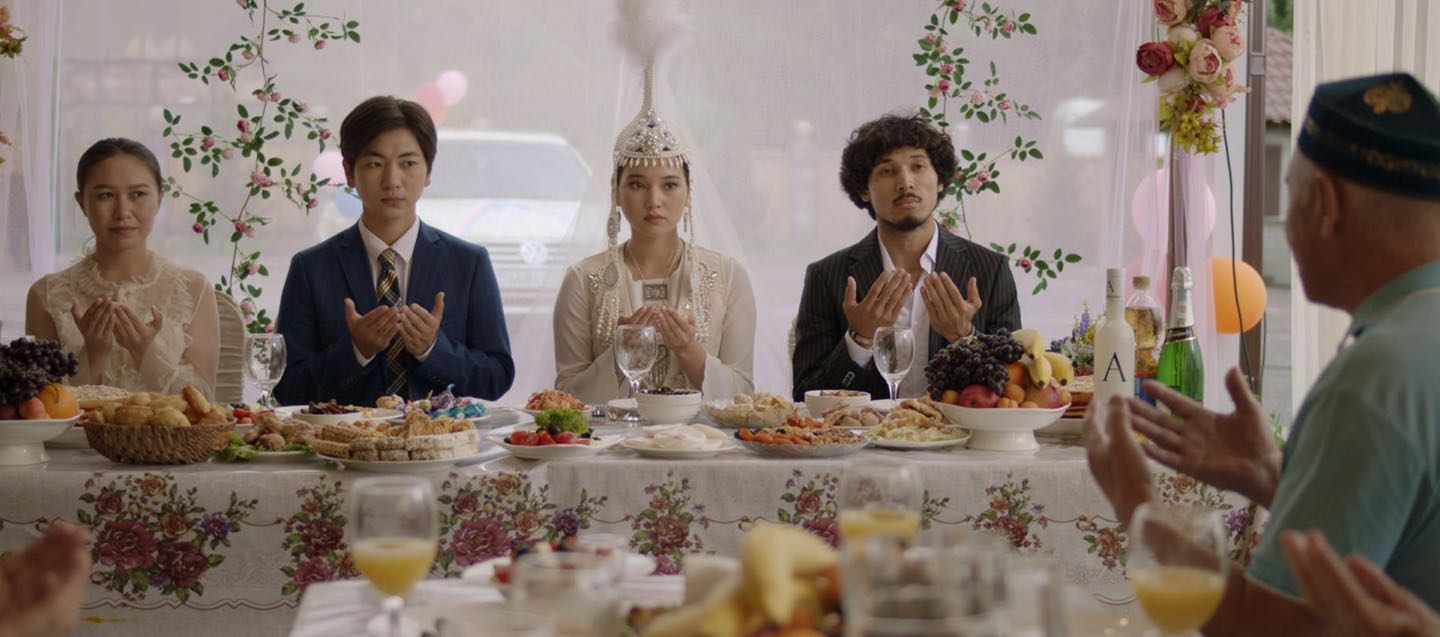by Brian Hioe
語言:
English
Photo courtesy of BIFAN
This is a No Man is an Island film review written in collaboration with Cinema Escapist as part of coverage of the 2023 Bucheon International Fantastic Film Festival (BIFAN). Keep an eye out for more!
DAUREN’S WEDDING focuses on a fascinating topic–weddings among ethnically Korean Kazakhs. However, the film squanders its chance to elucidate this premise with its hamstrung plot.
The movie follows assistant director Seung-joo. After coming under fire for faking the names of interviewees in a documentary on Africa, Seung-joo finds himself sent to rural Kazakhstan with cinematographer Young-tae to produce a documentary on weddings among Korean Kazakhs. This is to be produced in collaboration with local director Park Yu-ra, who is himself Kazakh Korean.
Things quickly go awry after Yu-ra is struck by a car after a night of drinking, with Seung-joo and Young-tae subsequently forced to spend the majority of their budget on hospital expenses for him. Though the two set out to film a Korean Kazakh wedding, the slow pace of their taxi driver leads the duo to miss the wedding.

Photo courtesy of BIFAN
Yu-ra promises that the two will still be able to film a wedding and so dispatches them to his hometown of Saty Village. While Yu-ra’s uncle Georgi promises to help them, finding a wedding proves difficult. As such, Seung-joo hits on the idea of staging a fake wedding, enlisting a local archery teacher that Seung-joo unexpectedly becomes smitten with as part of this scheme. Hijinks ensue, then.
Dauren’s Wedding is, for the most part, a simplistic comedy. Seung-joo and Young-tae’s antics are clearly meant to be funny for the audience. Seung-joo is the more uptight of the two, while Young-tae is more easygoing and makes local friends as a result.
Nevertheless, much of the film’s humor comes from laughing at Korean Kazakhs and their apparently backward ways. Overall, the film does not show Kazakhs positively. . This can be seen with the depiction of the taxi driver who drives the protagonist duo to the missed wedding, Yu-ra, his uncle Georgi, and others. Korean Kazakhs are depicted as lazy and spending most of their time drinking.
Seung-joo’s love interest, the archery teacher Adina, is the apparent only exception to this rule. Nevertheless, Adina’s main purpose in the plot is to be Seung-joo’s love interest. She has no real role as a character in her own right except to facilitate the narrative, as seen in how she readily agrees to his hair-brained and illogical scheme after some initial resistance.
The depiction of dynamics between Korean Kazakhs and Koreans has clear colonial dynamics, something at odds with what is otherwise framed as a moral tale promoting cross-cultural understanding. For one, Seung-joo’s relationship with Adina comes across as something a colonial romance torn from Dances with Wolves or similarly problematic depictions of men from “advanced”, usually western cultures and women from less advanced, usually Indigenous ones.
Saty Village is depicted in idealized terms, as an unspoiled utopia full of lush and beautiful rural landscapes, while no urban area of Kazakhstan ever truly features in the film. This is in line with depicting the residents of the village as simple, kind, and less-civilized folk.

Photo courtesy of BIFAN
Indeed, one can detect whiffs of a savior mentality with regards to the role that Koreans can play internationally from the get-go, with regards to the documentary on Africa that features early in the plot, and then with regards to the depiction of Korean Kazakhs.
Dauren’s Wedding fails to really be funny either, with most of the jokes simply failing to hit home, and characters being for the most part lifeless outside of whatever the plot requires of them at the moment. This is perhaps most visible in how Korean speakers are readily at hand, as if simply by coincidence, whenever the plot requires them.
Dauren’s Wedding takes its title from the Kazakh name that Seung-joo adopts as part of his marriage scheme. Yet the film’s engagement with Korean Kazakh culture–offering material for what could otherwise be a rich, fascinating, and insightful movie–is shallow, insipid, and insulting at best. One comes away with little from the film, apart from having wasted two hours of one’s life on shallowly disguised bigotry.



